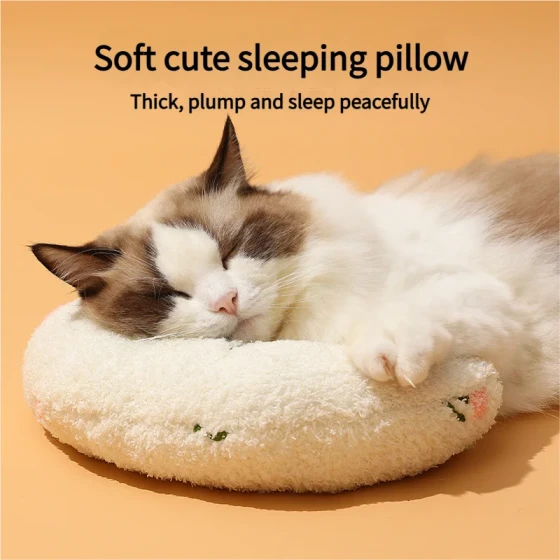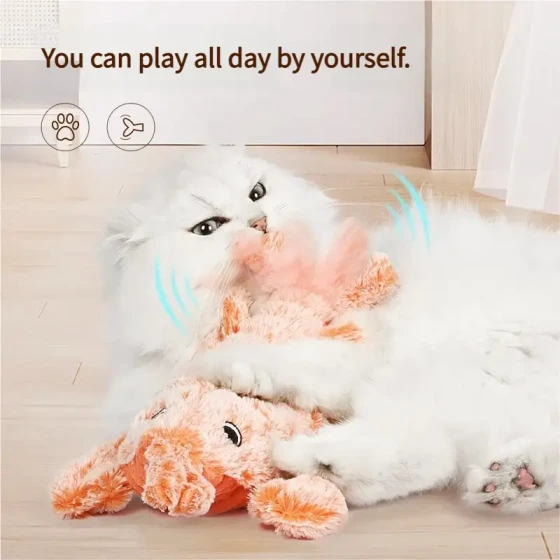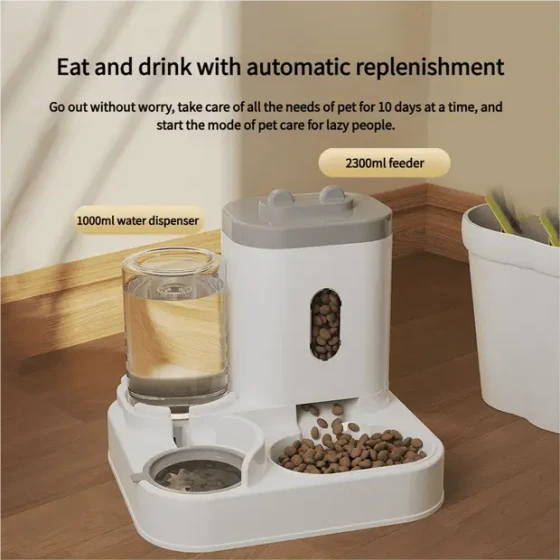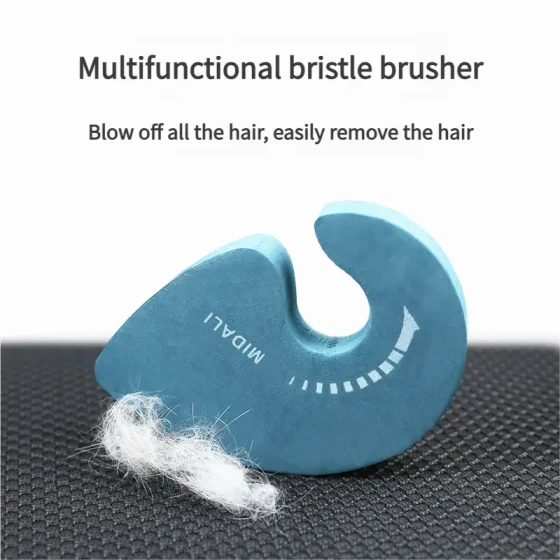Newborn Kitten Eyes Not Opening_Common Causes of Single Eye Not Opening in Neonatal Kittens
Newborn kittens’ eyes usually gradually open within 7 to 14 days after birth. If a newborn kitten’s eyes remain closed for a long time, or only one eye opens, it is usually caused by various reasons such as physiological delay, eye infections (like conjunctivitis), lacrimal sac blockage, or foreign body irritation. Owners should be patient and observe carefully, and seek professional veterinary help in time if necessary. Never forcibly open the kitten’s eyes to avoid irreversible damage.
Neonatal kittens: The secret of eye opening and potential challenges
Newly arrived kittens are like tightly closed “mini envelopes,” with their eyes sealed at birth by temporarily fused eyelids. This is not abnormal but a natural protective mechanism. Generally, this “envelope” slowly opens within 7 to 14 days after birth, revealing the clear, curious eyes. However, sometimes kittens’ eyes may refuse to open for a long time, or only one eye opens, leaving caregivers puzzled: “What’s going on? Is there something wrong with my little master?” Don’t worry; today we’ll discuss the common causes and coping methods behind neonatal kittens not opening their eyes, especially single eye non-opening.
1. Common causes of neonatal kittens not opening their eyes
If a kitten’s eyes delay opening or only one eye opens, there are usually the following possibilities:
-
Physiological delay: Patience is golden!
- What is physiological delay? Just like human babies grow at different speeds, kittens also vary individually in the timing of their eye opening. Some may open at 7 days, others at 14 days or even later. It’s like a "slow running race" — some start fast, some steady and slow. As long as the kitten is mentally alert, eating well, and without abnormal secretions, it’s likely just physiological delay.
- Special reminder: For breeds like Siamese cats, their eyes often open slightly later, so if your kitten is Siamese, be extra patient.
-
Eye infections: The most common "troublemakers"
- Bacterial conjunctivitis: This is one of the most common eye problems in neonatal kittens. Imagine bacteria from the birth canal or environment invading when kittens are born, infecting their eyes. Symptoms include red swollen eyelids with sticky purulent discharge (yellow, green, or gray-white), sometimes causing eyelids to stick tightly shut, making it hard to open the eyes. This infection is like an eye "cold" requiring timely medication and injections.
- Viral conjunctivitis: Feline Herpesvirus is another culprit causing neonatal kitten eye infections. This virus can be transmitted vertically from the mother or through the environment. Kittens infected with herpesvirus may show eye symptoms (watery or mucus-like discharge, even ulcers) along with sneezing, runny nose, and other upper respiratory symptoms. It’s like the eyes are invaded by a "viral army."
- Single eye not opening? If infection happens only in one eye or one eye is more severely infected, single eye non-opening may occur.
-
Lacrimal sac blockage: The trouble of nowhere for tears to go
- What is lacrimal sac blockage? The lacrimal sac is a "small reservoir" collecting tears, while the tear duct is the "drainage pipe." If this "pipe" is underdeveloped at birth or blocked by inflammatory secretions, tears cannot drain properly, accumulating in the eye area, causing eyelid adhesion, hindering eye opening. It’s like a clogged household drain where water cannot flow out.
- Symptoms: Persistent tear staining around the eyes, wet fur, sometimes with mild inflammation.
-
Entropion: A congenital "minor defect"
- What is entropion? Some cats are born with abnormal eyelid structure causing eyelids to roll inward, making eyelashes rub directly against the eyeball, causing pain and irritation. Although uncommon in neonatal kittens, if the eyes stay closed for a long time with no clear infection signs, consider this possibility. It’s like the eyelid "grows crooked," causing discomfort due to rubbing.
-
Foreign body irritation or trauma: Unexpected misfortune
- Though uncommon, if the newborn environment contains fine dust, hairs, or foreign bodies, or minor eye scratches occur during cleaning, it can cause eye discomfort, leading the kitten to resist opening one or both eyes. It’s like having "sand in the eyes," naturally making them reluctant to open.
2. How to initially judge and care at home
Before deciding whether to take the kitten to the hospital, you can first perform some preliminary observations and simple home care.
-
Careful observation:
- Secretions: Are there yellow, green, white, or transparent sticky secretions around the eyes? If yes, it’s mostly an infection.
- Redness and swelling: Are the eyelids visibly red and swollen?
- Mental status: Is the kitten’s feeding, excretion, and general mental condition normal?
- Mother’s condition: Does the mother show symptoms of upper respiratory infection?
- One side or both? Are both eyes unopened or one eye normally open while the other is still closed?
- Time: How many days since birth?
-
Gentle home care:
- Remember: Never forcibly open! Forcibly opening a kitten’s eyes can damage their delicate eyeballs, causing severe consequences, even permanent blindness. It’s like "adding insult to injury" for the damaged eyes.
- Warm compress: Prepare a clean gauze or cotton ball soaked in warm boiled water cooled to about 30-40°C (comfortable to touch), and gently squeeze out excess water.
- Gentle wiping: For kittens with closed eyes, gently wipe the eyelids with the warm moist gauze to soften and remove secretions around the eyes. Wipe gently from the inner corner to the outer corner, using a clean surface each time. Just like wiping away eye discharge.
- Repeat multiple times: Warm compress and wiping 2-3 times daily for several minutes each time. If secretions are heavy, wipe more frequently.
- Clean environment: Keep the kitten’s living environment clean to reduce bacteria and virus growth. Clean litter boxes timely to avoid bacterial transmission.
3. When must you take it to see a vet?
Though patience and home care are important, some situations require immediate professional veterinary help as "red lines":
- Large amounts of purulent secretions: If the eye has large quantities of yellow, green, or gray-white purulent discharge, or eyelids stuck tightly shut that cannot be softened with warm compress.
- Severe eyelid redness, swelling, and heat: Indicating severe inflammation.
- Kitten lethargic and poor appetite: Possible signs of systemic infection.
- Still unopened or no improvement after many days: If eyes remain closed beyond the normal opening time (14 days), or no improvement or worsening after home care.
- Other respiratory symptoms: Such as sneezing, runny nose, cough, possibly indicating herpesvirus infection.
- Suspected eyeball injury: If eyeball abnormalities are seen (white spots, ulcers), or kitten shows intense pain.
The vet will conduct a professional examination based on the kitten’s condition to determine the infection type (bacterial or viral) and prescribe suitable eye drops, ointments, or oral medications.
4. Prevention: Guard the little life from the source
- Health management of the mother cat: Ensure the mother cat has adequate nutrition during pregnancy and lactation, with regular health checks and vaccinations to reduce viral transmission risks.
- Clean and hygienic birthing environment: Prepare a clean, warm, dry area for the mother to give birth, reducing bacteria contact at birth.
- Regular cleaning of the maternity area: Keep kittens’ living area clean, promptly remove waste to avoid bacteria growth.
- Avoid cross infection: If there are other cats in the home, monitor their health status to prevent potential infection sources.
5. Frequently Asked Questions
-
Q1: How long after birth do kittens open their eyes?
A1: Usually within 7 to 14 days after birth. -
Q2: Is it normal if one kitten eye is open but the other is not?
A2: Sometimes one eye opens first. But if the other eye remains closed for several days or shows secretions, redness, or swelling, it should be taken seriously. -
Q3: Can you forcibly open a kitten’s eyes by hand?
A3: Absolutely not! Forcibly opening can damage fragile kitten eyes causing serious consequences. -
Q4: Does eye discharge mean infection?
A4: Large, sticky, yellow or green discharge accompanied by redness is very likely an infection. Small amounts of transparent or white secretions can be normal but should be monitored if increasing. -
Q5: Can kittens with closed eyes be bathed?
A5: Newborn kittens are not recommended for bathing due to poor temperature regulation and risk of hypothermia and cold. Especially when eyes are closed, avoid water and bacteria entering eyes.
Summary
Kittens not opening their eyes, whether one or both, are a concern for caregivers. In most cases, with patience and proper home care, their little eyes will open smoothly. But if infection symptoms or lethargy occur, do not hesitate to take them to a professional vet, as early diagnosis and treatment are vital for their vision health. Remember, as their "parents," our careful observation and timely action are key to protecting these little lives.
References
- Cat disease monograph, chapters on cat eye diseases and kitten care.
- Articles on kitten eye health published on reputable animal hospital websites.
- International Veterinary Medical Association clinical guidelines on feline eye infections.



